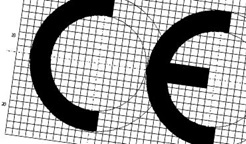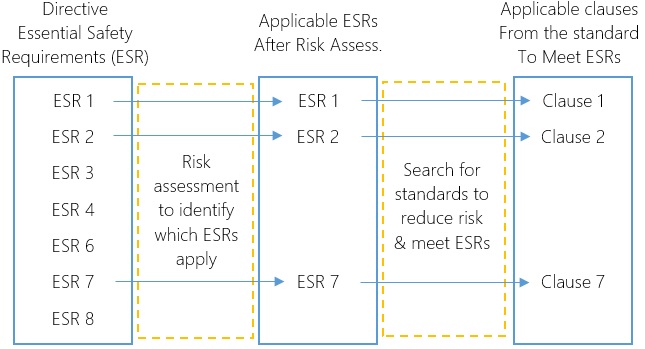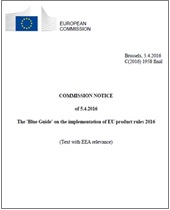UPDATE: The new Directives have now come into force – New Declarations should now be quoting the new Directives.
The date for when the new 2016 CE marking Directives are coming into force is fast approaching and now is the time to make sure that you are prepared for the changeover.
From the 20th April 2016, the new Directives will come into force, requiring manufacturers, distributors and importers to comply with the new requirements. The changes for most are not expected to be vastly different from a technical or engineering point of view, but are more likely will require some administrative changes.
 The Directives affected on the 20th April will be:
The Directives affected on the 20th April will be:
– Low Voltage Directive
– ElectroMagnetic Compatibility Directive
– ATEX Directive
– Lifts Directive
– Simple Pressure Vessels Directive
– Measuring Instruments Directive
– Non-automatic Weighing Instruments Directive
– Civil Explosives Directive
The intent of the changes, are to ensure that all CE marking Directives are aligned to the new framework, giving a greater level of consistency across all of the Directives. Therefore the Directives will be using the same terminology and definitions, and the conformity assessments modules will be similar, however there several key changes:
– Risk Assessments forming part of the conformity process
The new Directives now state that an adequate analysis and assessment of the risks must now be included within the technical documentation. Previously under many of these Directives, the requirement to undertake a risk assessment was not explicit, however it is now a clear requirement. The risk assessment should identify the hazards that are applicable to the product and then for the manufacturer to use this information to help identify essential requirements of the Directive and any standards that can be employed to reduce or eliminate the risks. You can read more about risk assessments on a separate article here.
– New format for the Declaration.
Along with the new Directives comes a new Declaration, titled the ‘EU Declaration of Conformity’. The new Declaration not only has a new title (changing the letters ‘EC’ to ‘EU’) but also has a new format. Using the words from the new Low Voltage Directive, the new Declarations “shall have the model structure set out (within the Directive)”. This means that the Declarations are likely to be the most obvious sign whether a company is aware of the new changes or not. We strongly recommend that manufacturers ensure that their Declarations are updated ready in time for the 20th April. We have generated some guidance on Declarations here.
– Economic Responsibilities are now clear.
The final key change is the inclusion of CE Marking requirements for other types of ‘Economic Operators’ other than manufacturers. Previously the requirements for importers and distributors was not always made very clear and was often left to information within guidance notes. Now the new Directives contain specific requirements for all of the different types of economic operators. If you are looking for assistance, we are running an ‘importers CE marking workshop’, and you can find more information on our public training calendar.


 The Directives affected on the 20th April will be:
The Directives affected on the 20th April will be:
 The ‘Blue Guide’ is a publication by the European Commission that offers CE Marking information and advice on the implementation of EU product Directives. The original document had a blue front cover, which gave birth to the informal name, and covered many of the older versions of the EU Directives. It was updated in 2014 and released officially as the ‘Blue Guide’ for the first time.
The ‘Blue Guide’ is a publication by the European Commission that offers CE Marking information and advice on the implementation of EU product Directives. The original document had a blue front cover, which gave birth to the informal name, and covered many of the older versions of the EU Directives. It was updated in 2014 and released officially as the ‘Blue Guide’ for the first time. There is a new CE Marking Directive being implemented for radio equipment.
There is a new CE Marking Directive being implemented for radio equipment.







